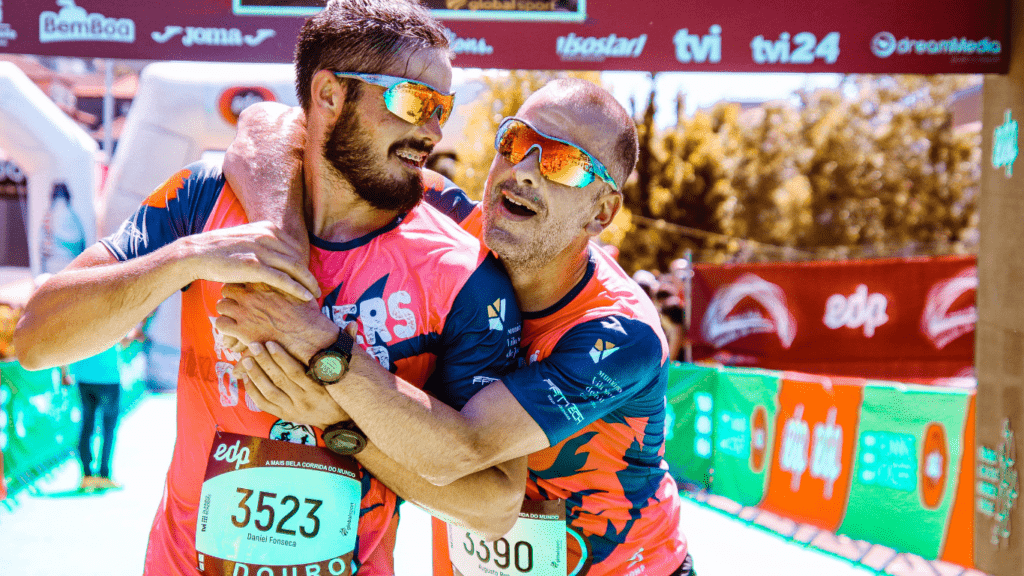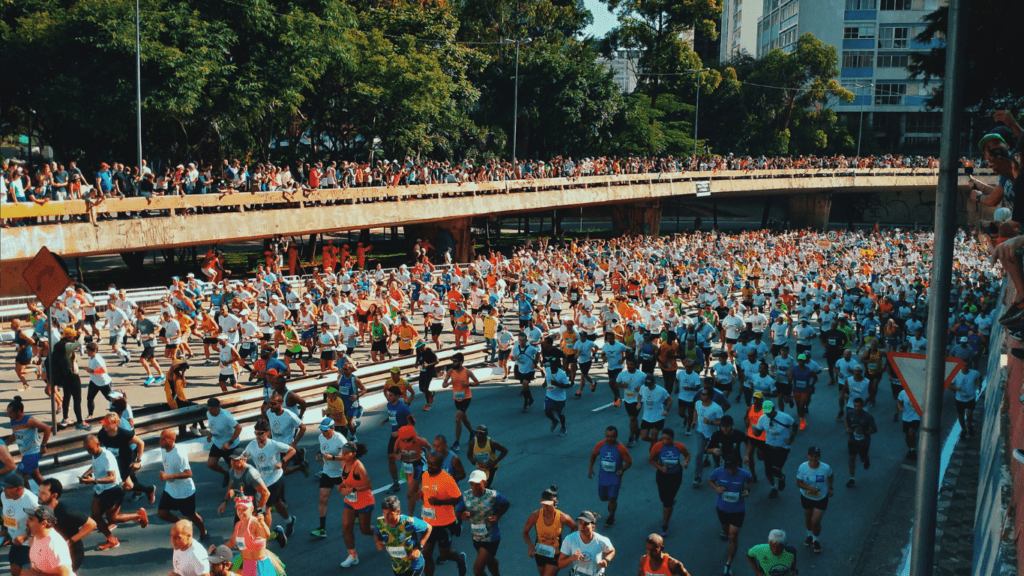Understanding the Wall in Marathon Running
Runners often encounter a formidable obstacle known as “the wall” during marathons. This concept involves both physical and psychological challenges that can significantly impact performance.
What Is the Wall?
The wall typically occurs around the 20-mile mark of a marathon. It’s characterized by sudden fatigue, decreased energy levels, and a sense of exhaustion.
Physically, glycogen stores deplete, forcing the body to burn fat for energy, which is less efficient. Symptoms include heavy legs, a slower pace, and sometimes dizziness or nausea.
Psychological Impact of Hitting the Wall
The wall also has a profound psychological effect. Runners may experience self-doubt, frustration, and a strong urge to stop. This mental barrier often feels insurmountable.
If a runner lacks mental resilience, overcoming this psychological hurdle becomes even more challenging. Strategies like:
- positive self-talk
- visualization
- breaking the race into smaller segments
can mitigate these impacts.
Strategies to Overcome the Wall
Breaking through the wall in marathon running demands a well-rounded approach. These strategies focus on mental and physical preparedness.
Mental Preparation Techniques
Implementing mental preparation techniques can help runners stay focused. Visualization involves mentally rehearsing the race, imagining each mile and potential challenges.
This creates a psychological roadmap, reducing anxiety. Positive self-talk, where runners use affirmations like “I am strong” or “I can do this,” boosts confidence and counters negative thoughts.
Breaking the race into smaller, manageable segments, such as focusing on the next mile instead of the entire distance, can make the race feel less daunting.
Nutrition and Hydration Tips

Nutrition and hydration play critical roles in overcoming the wall.
- Consuming carbohydrates during the marathon helps maintain energy levels.
- Use energy gels, sports drinks, or easy-to-digest snacks every 30-45 minutes.
- Proper hydration begins before the race; drink water and electrolyte-rich fluids.
- Monitor fluid intake during the race to avoid both dehydration and overhydration.
- Balancing sodium intake through sports drinks or salt tablets can prevent cramping and maintain electrolyte levels.
These strategies provide runners with tools to push past the wall and reach their marathon goals.
Training Tips to Avoid Hitting the Wall
In marathon training, strategic preparation becomes vital to avoid hitting the wall.
Long Runs and Pacing
Long runs build endurance essential for marathon success. Each week, I increase my long run by about 10%, never exceeding a total mileage gain of 18 miles weekly to avoid overtraining.
For pacing, I maintain runs at a pace 60-90 seconds slower per mile than my target race pace. This conservative approach builds stamina and prevents early burnout on race day.
Incorporating tempo runs once a week aids in improving speed endurance without taxing the body excessively.
Incorporating Mental Toughness Workouts
Mental toughness proves critical in pushing through the wall. During training, I simulate race conditions by running on tired legs, either through back-to-back long runs or adding speed intervals after an extended run.
Visualization exercises, where I mentally rehearse challenging race scenarios, help build resilience.
Additionally, setting small, achievable goals during long runs keeps motivation high and builds confidence for race day adversity.
Real-Life Success Stories
Real-life success stories of marathoners demonstrate that overcoming “the wall” is possible. These athletes inspire others by showing how mental and physical strategies translate into race-day success.
Case Studies of Marathoners Who Overcame the Wall
Paul Tergat, a Kenyan marathoner, famously broke the wall at mile 21 of the Berlin Marathon in 2003. Despite experiencing extreme fatigue, Tergat pushed through by focusing on his goal and using visual cues to maintain his pace.
His determination and mental resilience led him to set a world record, finishing the race in 2:04:55.
Jessica Augusto, a Portuguese runner, faced the wall during the 2011 New York City Marathon at mile 22. Augusto overcame it by breaking the remaining distance into smaller segments, celebrating each completed mile.
Her approach kept her motivated and enabled her to finish as the top European runner, crossing the finish line with a time of 2:25:11.
Dean Karnazes, an ultra-marathoner, encountered the wall during his first marathon, the 1992 San Francisco Marathon. Karnazes relied on positive self-talk and visualization techniques to overcome his mental and physical barriers.
His experience and perseverance sparked a career where he has completed numerous ultra-endurance events, becoming a symbol of pushing the human limits.
In each case, these marathoners utilized specific strategies like:
- goal-setting
- segmenting the race
- mental resilience
to conquer the wall and achieve remarkable feats in their marathon careers.



